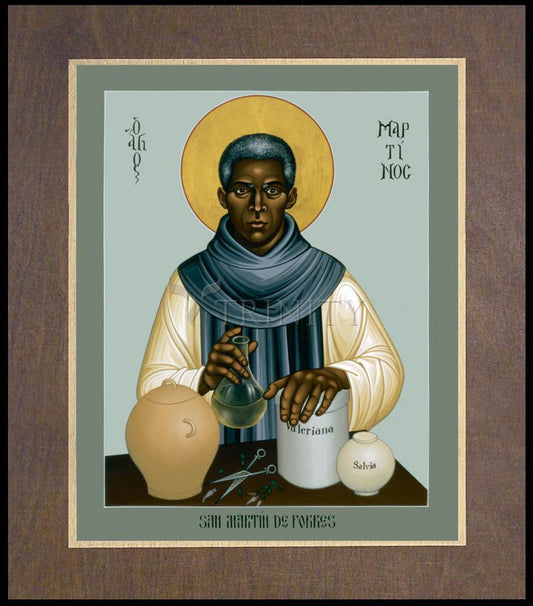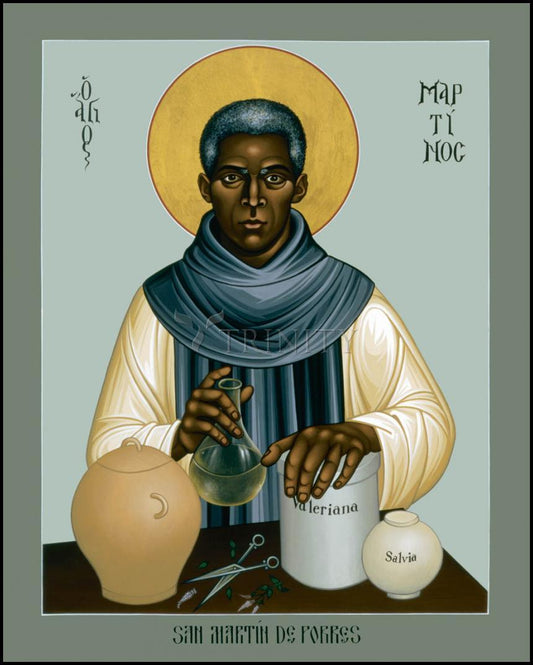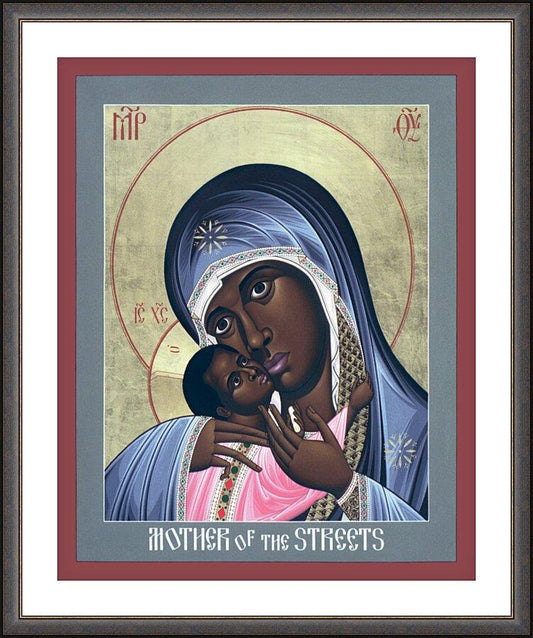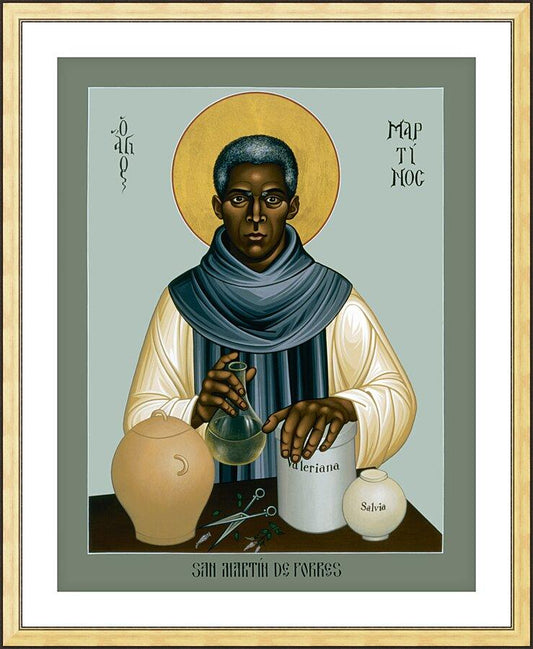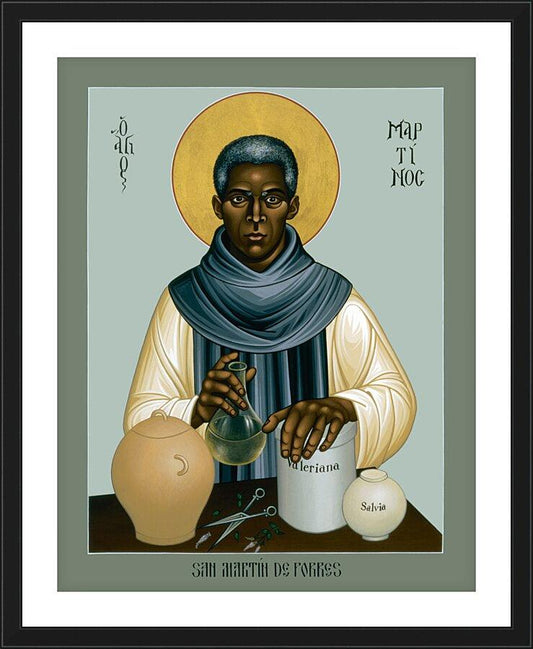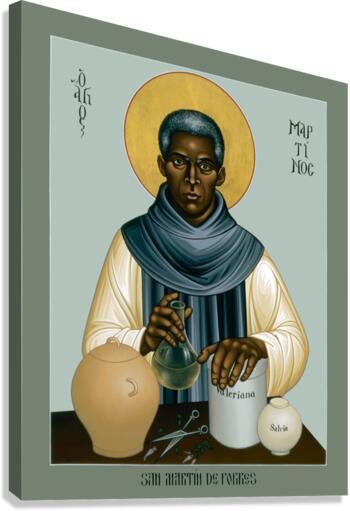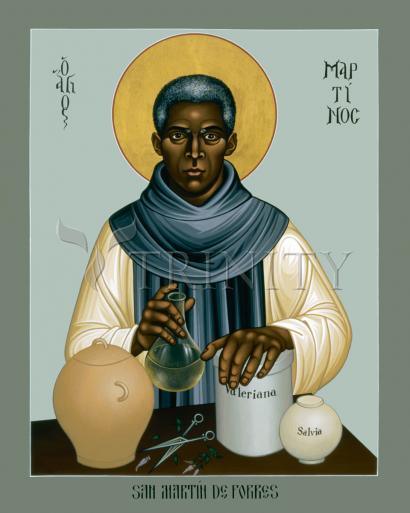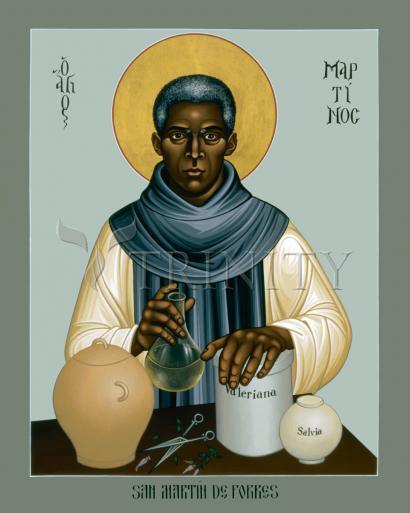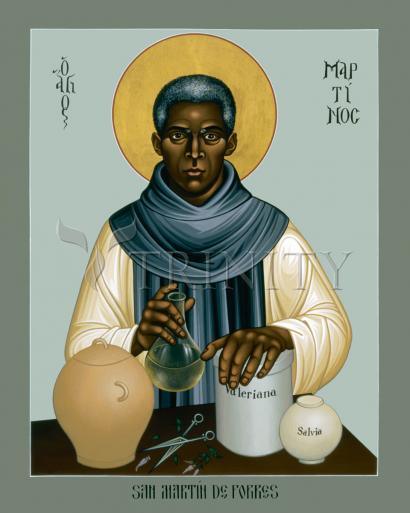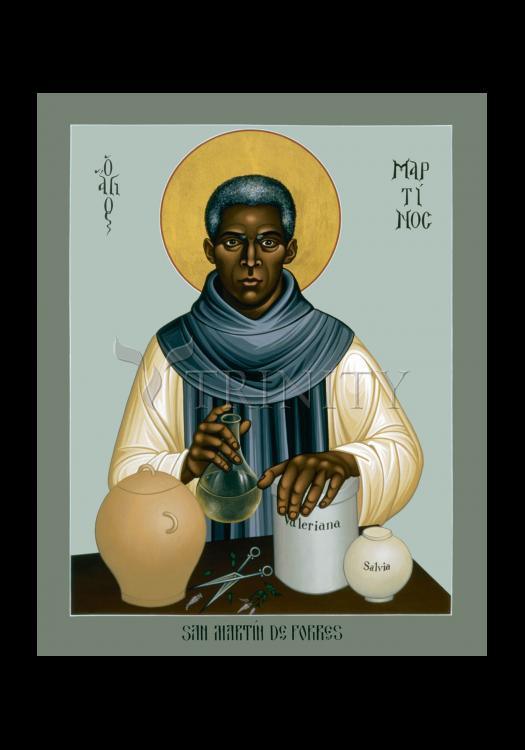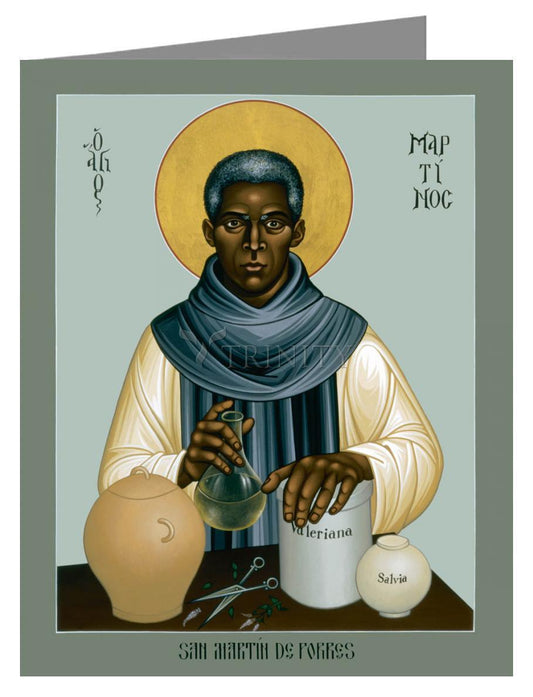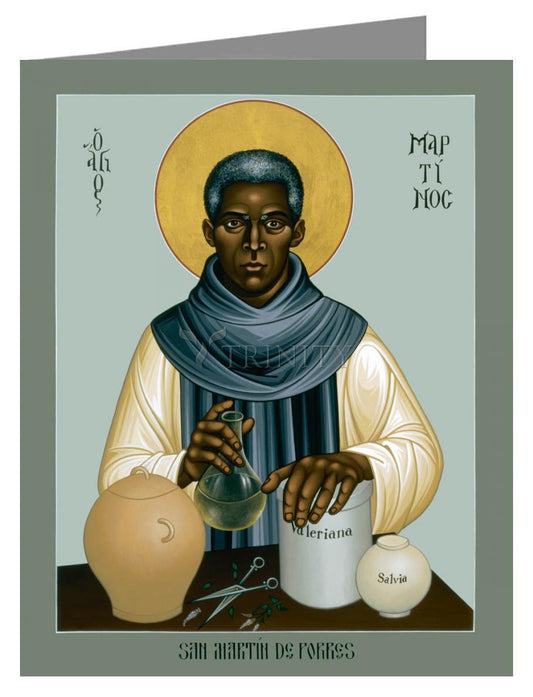Martin de Porres was born in Lima Peru in 1579, the illegitimate son of John de Porres, a Spanish knight, and a negro free-woman named Anna. Martin's father acknowledged him as his son after eight years, but then abandoned the family when their second child was born. Young Martin was brought up in poverty, compounded by having to bear the stigma of mixed blood. At the age of 12, he was apprenticed to a barber-surgeon where he learned to cut hair and draw blood for the accepted medical procedure of the day - bleeding a patient - and to prepare and administer medicine.
When Martin was fifteen, he began working with the Dominicans (the Order of Preachers founded by St. Dominic) as a lay helper and, eventually became a professed Lay Brother. He tended the sick in the monastery infirmary, which he kept well-stocked through ingenious means, such as frugality of material goods for his fellow Dominicans so as to provide necessities for the care and comfort of the sick and infirm. Also, Martin was responsible for the daily distribution of food alms for the needy in the town, which often times was supplied through miraculous intervention. (One of his closest friends was another Dominican, St. Rose of Lima, canonized in 1671, the first saint of the new world.)
Because of his social station as a person of mixed blood, there were many times when he was ridiculed and debased. But Martin never retaliated. All of the insults and denigration aimed toward him were offered to God as sacrifice. It is said that his "profound and consummate humility was based on his knowledge of the greatness of God," and made him ever-aware of avoiding any form of pride. For example, Martin insisted upon wearing one habit until it disintegrated into mere threads and fibers, opposing attempts to buy him a second one.
Martin was a very spiritual man, spending time in prayer, sometimes surrounded by a brilliant light, and doing severe penance several times a day. There are many recorded instances of when his brother monks found him in the chapel before the Blessed Sacrament so filled with love for Jesus that he levitated in pure ecstasy, In other instances, Martin was able to bi-locate, and pass through locked doors in order to help a sick or dying person in another part of the monastery. He was able to know if the person in his care would or would not recover. If he tended to them solicitously, they knew they would not recover, because Martin was very patient and caring with the dying. But, if they felt "neglected" by him, he told them to take heart because it meant they would be well soon.
On the lighter side, often we see Martin pictured in his Dominican habit holding a broom, with a mouse and dog at his feet. There is an interesting anecdote about mice. One time there seemed to be a mouse "convention" in the wardrobe room of the monastery, where they feasted on the finest linen garments and sheets, leaving the old ones untouched. Some of the monks wanted to poison the rodents, but Martin would not hear of it. One day he caught a little mouse and held him gently, and said, "Little brother, why are you and your companions doing so much harm to the things belonging to the sick? Look; I shall not kill you, but you are to assemble all your friends and lead them to the far end of the garden. Every day I will bring you food if you leave the wardrobe alone," After Martin let go of the mouse, there was scurrying from every nook and cranny and the procession started towards the monastery garden. Martin, tall and slender, with long strides, led the mice to their new home. Every day he brought them a meal and no mouse ever set claw or tooth in the monastery wardrobe.
Martin's renown grew and people outside of Lima - commoners and ecclesiastics - began coming to him for spiritual counseling, material aid, prayers, and cures. Although Martin wished to remain obscure, he continued because he saw it as the will of God.
In January of 1639 when Martin was sixty, he became very ill with chills, fevers, tremors and agonizing pain. He had several bouts of illness throughout the year and told his fellow monks that this would be his last illness. When his time had come and lay dying, he was tormented by the Devil who was making his final and vile attempt to obtain the pure soul of Martin himself. The struggle continued unmercifully as the evil one tried to trick and persuade Martin into believing he had wasted his life on fruitless works and prayers. Between these battles, though Martin continued to have ecstasies where the Blessed Mother, St. Dominic, and St. Vincent Ferrer, and other saints and angels appeared to him.
When death was imminent, he asked for Viaticum and the Last Sacraments. As the Salve Regina was sung and the Creed intoned, the crucifix which Martin had been holding slipped out of his hands and his soul departed his body. It was around 9:00 P.M., November 3, 1639, in the Rosary Priory. After the prayers of the monks were completed, they looked through Martin's meager possessions and came across a new tunic. Father Barbazan then remembered Martin's words, "This is the habit I am to be buried in,"
For a "poor mulatto," Martin's funeral was that of a high ranking official, rather than a humble Dominican Friar. The cortege consisted of religious and friends of the monastery, the Chapter of the Cathedral, superiors of monasteries, lay dignitaries, and military officials. Father Gaspar de Saldana, the Prior, officiated, and Martin's body was borne by four of his most intimate friends - the Viceroy, the Archbishop of Mexico, the Bishop of Cuzco, and John de Penafiel, Judge of the Royal Court. Martin was buried among the priests because he was judged worthy of this honor. Later that evening, Archbishop Felician de Vega remarked, "Yes, this is the way saints should be honored."
On May 6, 1962, three hundred and twenty-three years after Martin's death, Pope John XXIII canonized St. Martin de Porres in Rome. We may wonder why there is such a delay, but God works in His own way, not ours. Perhaps it was because the Second Vatican Council was underway, which would result in vast changes enabling a heightened understanding and appreciation for the spiritual life in the Catholic Church. Perhaps it was because the Civil Rights movement was making strides in the United States to bring about an awareness of the equality and contribution of Black Americans. Perhaps this why St. Martin de Porres was canonized, to serve as a Christian model to show that an illegitimate mulatto, relegated to a lowly position in the 16th and 17th century Peruvian society, transcended the prejudice and labored in the fields of the Lord and changed the world around him.
Born: December 9, 1579 at Lima, Peru
Died: 1639 of fever
Beatified: 1873
Canonized: May 16, 1962 by Pope John XXIII



